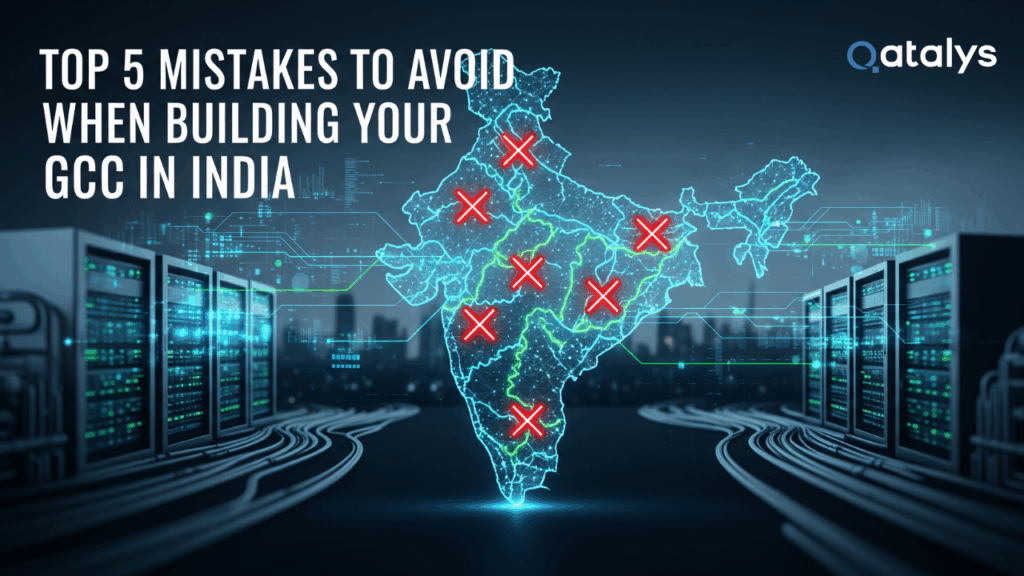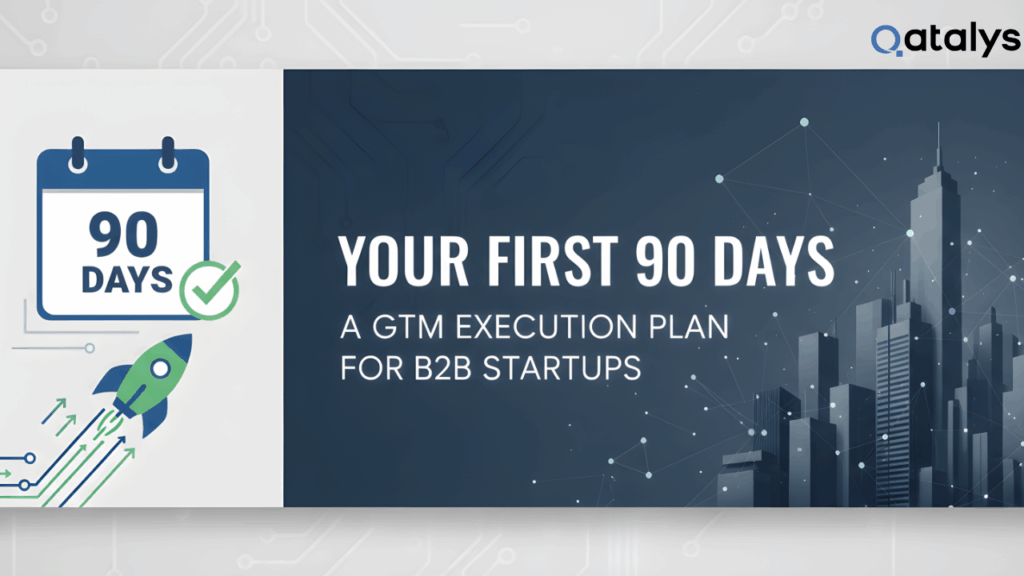You’ve got a solid product, a bit of traction, maybe even some funding – but now comes the hard part: getting it into the hands of real users.
That’s where a Go-to-Market (GTM) strategy comes in. It’s the difference between quietly launching into a void and building momentum from day one.
For early-stage startups, a strong GTM strategy isn’t optional – it’s essential. With limited budgets, crowded markets, and pressure to show traction fast, your GTM plan is what determines whether you gain early users – or get lost in the noise.
In this guide, we’ll break down the GTM basics – without the fluff. Whether you’ve built your MVP or are gearing up for launch, this is your step-by-step walkthrough to get your product in front of the right audience, on the right channels, with a message that actually converts.
What Is a Go-to-Market (GTM) Strategy?
A go-to-market strategy is your startup’s blueprint for launching a product and getting it into the hands of paying users. It answers three key questions:
- Who are we targeting?
- What value are we offering them?
- How do we reach them effectively and convert interest into action?
While it may sound like a marketing buzzword, GTM is not just about promotion. It’s the intersection of product, marketing, sales, and customer success – designed to help you enter the market with clarity, focus, and a measurable plan.
GTM vs Marketing Strategy vs Sales Strategy
| Strategy Type | Focus | Timing |
| GTM Strategy | Launch plan across all functions | Pre-launch to early growth |
| Marketing Strategy | Ongoing brand and demand generation | Continuous |
| Sales Strategy | Tactics to close and retain customers | Post-launch (traction stage) |
Your GTM strategy comes first – because if you don’t get the launch right, everything downstream becomes harder (and more expensive) to fix.
When Should Startups Start Thinking About GTM?
The biggest mistake founders make with GTM strategy? Thinking about it too late.
Most startups wait until after the product is built – or worse, just before launch day – to figure out how to reach users. By then, it’s often reactive, rushed, and inefficient.
A strong GTM strategy isn’t something you create after your MVP is ready. It should evolve alongside product development, guiding what you build, who you build it for, and how you test assumptions.
Here’s a simple GTM timing breakdown:
| Product Stage | GTM Focus |
| Pre-MVP | Audience research, messaging, channel planning |
| During MVP Build | Early content, landing pages, lead capture |
| Post-MVP / Beta Phase | Initial outreach, user onboarding flow |
| Launch & Beyond | Funnel optimization, paid/organic scaling |
The earlier you start mapping your GTM strategy – even in lightweight form – the more aligned your product will be with real customer needs, and the smoother your launch will feel.
At Qatalys Venture Studio, we often work with startups who’ve already built something, but haven’t laid the groundwork for who they’re targeting or how they’ll grow. In most cases, that’s fixable – but starting early is always better.
The 5 Core Pillars of a GTM Strategy
A solid go-to-market strategy isn’t about launching with fanfare – it’s about launching with focus. These five pillars give your GTM plan structure, direction, and accountability.
1. Target Audience Definition
Before choosing channels or crafting messages, you need to know exactly who you’re selling to.
Ask:
- Who has the problem we solve?
- What are their goals, frustrations, decision triggers?
- Where do they already hang out online or offline?
Go beyond surface-level demographics. Build Ideal Customer Profiles (ICPs) and buyer personas using real conversations, not assumptions.
Founders often skip this step or rely on guesswork. At Qatalys Venture Studio, we advise speaking to at least 20–30 users in your target segment before finalizing positioning.
2. Market Positioning & Messaging
Once you know your audience, you need to communicate why your product matters to them – in plain language.
A simple messaging structure:
- Problem – What pain are they feeling?
- Solution – What do you offer to solve it?
- Outcome – What transformation do they experience?
Your messaging should clearly answer: “Why you, why now?”
Avoid feature-dumping. Talk benefits. Positioning is about owning a space in the customer’s mind, not explaining every product detail.
3. Channel Strategy
You don’t need to be on every platform. In fact, doing less is smarter in early-stage GTM.
Choose 2–3 channels where your audience already exists. Consider:
- Owned: Email, blog, landing pages
- Earned: PR, SEO, influencer mentions
- Paid: Meta, Google, LinkedIn Ads
For most startups, an early mix of content, email, and founder-led outreach outperforms complex ad funnels.
Tip: Test channels early with micro-experiments before scaling.
4. Customer Journey & Funnel Design
Map your user’s path from discovery to action. Think in stages:
- Awareness: How do they first hear about you?
- Consideration: What makes them want to learn more?
- Conversion: What convinces them to sign up, book, or buy?
- Retention: What keeps them coming back?
For each stage, list the touchpoints, content, and CTAs involved.
Example funnel: Ad → Landing Page → Free Demo → Email Nurture → Conversion
This clarity helps prevent leaky funnels and wasted spend.
5. KPIs & Feedback Loops
A GTM strategy is only as good as its ability to measure what’s working.
Define success metrics upfront. Examples:
- Cost Per Lead (CPL)
- Website Conversion Rate
- Activation Rate
- Trial-to-Paid Ratio
- Customer Churn
Then set up regular review cycles – weekly or bi-weekly – to review data and course-correct in real time.
The best founders treat GTM as a loop: plan → test → measure → refine.
Common GTM Mistakes Startups Make
Even great products can flop with a poorly executed go-to-market plan. Here are the most common pitfalls we see – and how to avoid them.
1. Building in Isolation
Founders often develop the product first, then try to “figure out” GTM later. That’s backwards.
Fix: Start validating audience, channels, and messaging while building – so your launch aligns with real demand.
2. Trying to Be Everywhere at Once
Posting on every social platform, running ads on five channels, and cold emailing thousands rarely works – especially early on.
Fix: Focus on 1–2 channels where your ICPs already spend time. Go deep, not wide.
3. Launching Without a Clear Value Prop
If your messaging is vague or product-focused (“We’re the best AI-powered SaaS for X”), users won’t connect.
Fix: Lead with the problem you solve and the transformation you deliver.
4. Ignoring the Follow-Up Funnel
Big launch? Great. But what happens after that first wave of signups?
Fix: Set up onboarding flows, email sequences, and nurture paths to convert interest into retention.
5. Measuring Vanity Metrics
High website traffic and social likes feel good – but they don’t always lead to growth.
Fix: Track meaningful metrics like signups, demo bookings, conversions, and retention.
A GTM Playbook for Funded Founders (The Qatalys Venture Studio POV)
At Qatalys Venture Studio, we work with early-stage startups that already have traction – an MVP, some users, or funding in place – but are struggling to translate that into structured growth. What they need isn’t more ideas – they need execution.
Here’s a proven GTM playbook we use when helping these founders launch:
1. Start With User Validation (Even Post-MVP)
Just because you’ve built something doesn’t mean you’ve nailed the problem-solution fit.
We often begin by running rapid user validation:
- User interviews to stress-test assumptions
- Landing page tests with messaging variants
- Survey or early access campaigns to gauge interest
This helps ensure you’re launching something people actually want.
2. Define the ICP – Then Find Them Fast
We don’t create hypothetical personas – we extract them from early usage patterns or interest signals.
Once we identify your Ideal Customer Profile, we help you:
- Scrape lead lists
- Build segment-specific email outreach
- Craft messaging playbooks for cold/warm campaigns
No spray-and-pray. We go direct.
3. Choose Two Core Channels to Dominate
In our experience, early-stage GTM works best when you:
- Own one content-driven channel (e.g., SEO, LinkedIn, webinars)
- Test one performance-driven channel (e.g., Meta ads, outbound email, partnerships)
We help you focus on traction over coverage – so you avoid wasting spend and time.
4. Set Up Early Growth Infrastructure
Even pre-product-market fit, we install systems for:
- Tracking key metrics (activation rate, CAC, LTV)
- Automated onboarding and nurture flows
- Growth dashboards to monitor campaigns in real time
This turns GTM into a data-driven feedback loop – not just a launch checklist.
Conclusion
A great product is only half the battle – getting it in front of the right users is the rest.
That’s what a go-to-market strategy is all about. For early-stage startups, it’s not just a launch plan – it’s your first system for learning what works, where your customers are, and how to grow without burning time or budget.
If you’ve already built something and are ready to take it to market, don’t wing it. Build a GTM strategy with structure, speed, and intent.
At Qatalys Venture Studio, we help funded and traction-ready startups launch smarter – through focused validation, lean experiments, and execution systems built to scale. If you’re gearing up to launch and need more than just advice, we’re ready to build with you.
Ready to Launch with Confidence?
If you’re a funded founder or already have traction, we can help you build and execute a go-to-market strategy that actually works.
Book a Strategy Call → Let’s map out your GTM plan together.








